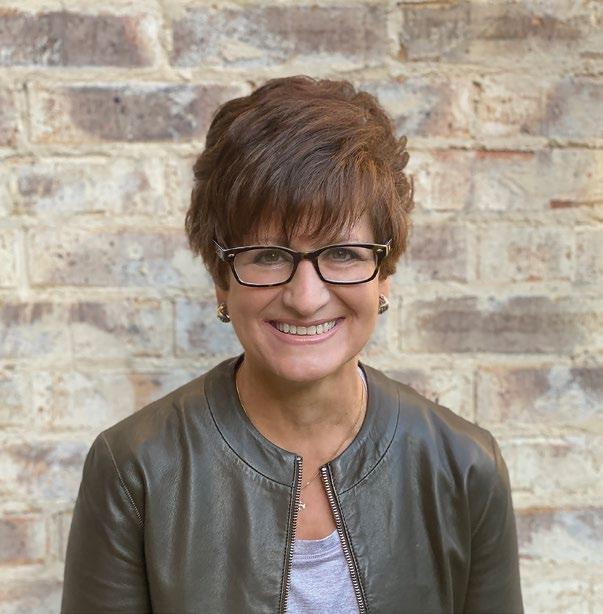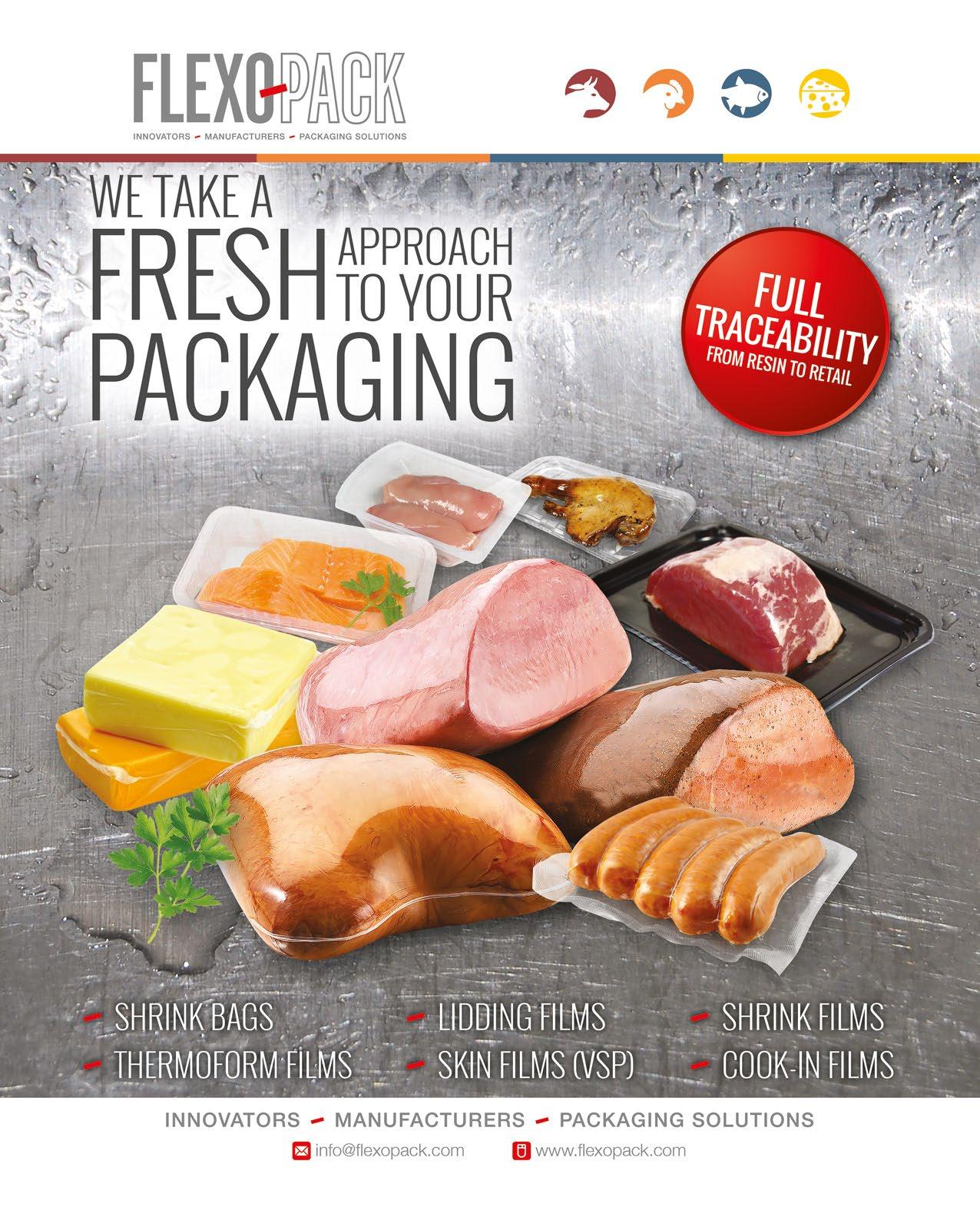
9 minute read
Packaging and Covid-19: How has it impacted the industry?
The COVID-19 crisis has thrown the world into The COVID-19 crisis has thrown the world disarray and the entire packaging supply chain into disarray and the entire packaging supply has been forced to adapt to unprecedented chain has been forced to adapt to the new new demands. Victoria Hattersley looks at realities. Victoria Hattersley looks at how the how the industry has responded so far, and industry has responded so far, and considers considers the possible long-term ramifications the possible long-term ramifications of the of the situation we now find ourselves in. situation we now find ourselves in.
PACKAGING AND COVID-19: HOW HAS IT IMPACTED THE INDUSTRY?
WE hadn’t planned to be writing this article. In different circumstances, right about now I’d be producing a post-interpack feature about the exciting new innovations we’d seen and what they mean for the industry moving forward.
But no. When something like COVID-19 happens (and what do I mean ‘something like’? There hasn’t been ‘something like’ this in my living memory) such plans go out of the window and it slams shut. We’ve watched as many thousands of people have lost loved ones, many have lost their jobs and entire industries are on uncertain ground. We’ve also watched as the Leader of the Free World ruminates live on television as to whether injecting disinfectant under the skin might be a feasible solution to the problem. So it goes.
If you’re a planner, such uncertainty is clearly stressful. If you work for an industry – like packaging and FMCG – where constant planning and foresight is a necessity, it becomes untenable. For those working to ensure vital food supply chains continue to run, the challenge has been extraordinary. By and large, the packaging industry has risen to this challenge.
The short-term impacts
The short-term effects of this crisis made themselves apparent very early on, with the growing volatility having a major impact on supply chains. To give just two examples: printing ink manufacturers across Europe have reported reduced availability of ethanol and n-propanol – key elements in the production of printed packaging inks; meanwhile, Simon Ellin, the UK Recycling Association’s chief executive, raised concerns over the lack of fibre to make carboard boxes as many councils suspend their recycling facilities due to COVID-19.
Shifts in production patterns and increased home-working have also had a knock-on effect across many sectors. “A large proportion of our business is with Food Service and FTG (Food To Go),” says UK-based Charpak’s Justin Kempson. “The impact of Food Service shutting down and FTG sales falling due to more people working from home has hit the business with orders being deferred or cancelled.”
Hand-in-hand with this move to working from home has come, perhaps unsurprisingly, an increased reliance on automation – a trend that is likely to continue once we have returned to ‘normal’. “During a time where we must practice social distancing, our focus on driving automation and doing more with less by investing and working smarter has become even more imperative to our own operations and for our customers,” says Ted Doheny, president and CEO of Sealed Air during a first quarter earnings call in May. “We are accelerating our innovations to support a more touchless, digital world. When we get through this pandemic, our core competencies in automation, food safety and protecting goods with advanced packaging solutions will be even more relevant.”
Again unsurprisingly, there has also been an acceleration of the e-commerce boom as brick-and-mortar stores are closed and people become more reliant on deliveries. “In March, coinciding with the implementation of stay-at-home or lockdown orders, the food industry experienced a dramatic shift to retail and a
Marisa Suter

dramatic slowdown in food service. For Sealed Air, this shift resulted in a surge in demand for our retailed applications, including case ready, shrink bags and prepackaged meals and snacks designed for home consumption.”
And lastly, what we have also certainly seen is an increased awareness of the vital role packaging plays in protecting and ensuring our food supplies. So much so that Europen has argued that the EU should recognize packaging and its raw materials as essential and to open designated priority lanes – the ‘green lanes’ – for their intra-EU transport.
The need to pivot
Many companies are discovering just how agile they can – or indeed must – be to meet the unprecedented new demands COVID-19 has created.
US-based dispensing systems producer Aptar is one company that has demonstrated an ability to pivot when required. In March it launched its InvisiShield technology – a ‘first of its kind’ anti-pathogenic packaging solution which can be integrated into sealed packages to protect fresh-cut produce from harmful pathogens such as bacteria, fungi and viruses.
However, says Angela Morgan, director of business development, “A lot of our customers in the food sector have been heavily impacted during this time and this definitely affected the product’s launch. So we decided to pivot the technology to help with the crisis. The result is ActivShield, which uses the same technology as InvisiShield to disinfect respirator masks for hospitals. The shield itself is a tiny strip that you take out, dip into tap water and put in a 1-gallon ziplock bag with the respirator mask after your shift. It can then be taken out again, disinfected and ready for the next shift, since disinfection takes only two hours.”
This also suggests that the COVID-19 crisis has of necessity been an impetus for innovation to some degree, as the industry is forced to respond to a new level of concern about packaging safety. “What we’re pursuing now is the same kind of technology to disinfect e-commerce packages or other surfaces where it’s said the virus can survive for up to three days,” says Angela. “The truth is, we don’t know this for sure, but we want to offer
Justin Kempson

that security and we have had a lot of our beauty and home customers want to give their consumers peace of mind. I don’t foresee the concern going away after this; moving forward I think consumers are always going to demand a higher level of security for goods coming into their home.”
There are of course other examples of the industry’s response to the crisis – so many we can’t list them all here. Among them, Walki, a producer of multilayer laminates and protective packaging materials, has developed a highperformance protective material for hospital aprons. DS Smith, meanwhile, has been working closely with food retailers across Europe to design, develop and produce new boxes to supply emergency provisions to the most vulnerable.
Long-term implications
So much for the short-term changes wrought by the crisis; what kind of longterm fallout can we expect? Perhaps most tellingly for the industry, there have been suggestions that the increased recognition of the protective role packaging plays may go some way to easing off the plastics backlash – and it’s easy to understand why this may be, given the hygiene benefits of this material. But we must not forget that there are environmental implications here, too. After all, the climate crisis has not been put on hold as we turn our attention to coronavirus.
“Until a few weeks ago anyone hearing the words ‘plastic packaging’ often thought of waste first,” says Mara Hancker of IK Industrievereinigung Kunststoffverpackungen, the German association for plastics packaging and films. “Plastic packaging had to be combatted, and anyone who used it should be ashamed of themselves. Virtually no one wanted to hear about the ecological benefits, facts were frighteningly irrelevant to many discussions and the populist ‘plastic-free’ demand drowned out many factual arguments.
“Then came the coronavirus and triggered worldwide changes in almost all areas of life. In exceptional situations like the current one, perspectives, perceptions and attitudes change. And this also applies to the way we handle packaging. By way of example, multi-use is not always better than single-use and we can be glad that we have the choice. PET bottles have an excellent carbon footprint and are an important mainstay of supply, especially in the face of increased demand.”
In fact, EuPc recently sent an open letter to the EU Commission advocating for the postponement of the Single-Use Plastic Directive. Does Mara think such a move would be justified in these circumstances, or is this beside the point?
“Hygiene and environmental protection are two legitimate concerns that should not be played off against each other. However, Corona changes the

perception of packaging. Its function is perceived and appreciated again. In the SUP Directive many things are well thought out, but many things are not well done, because speed was more important than care and now individual regulations must follow. But that has nothing to do with Corona.”
It’s also possible – though regrettable – that this shift may impact reusable packaging models. “There has already been some resistance to the use of ‘bags for life’,” says Justin Kempson, “as there is opportunity for the virus to be present on these and for it to be passed on through touching these bags (as well as cash) so I believe that this may impact on ‘refill’ containers that consumers take into store.”
There is also the question of the location of production itself: according to Marisa Suter of US-based design agency MS Design, there may be a growing move towards local production models rather than outsourcing further afield.
“Brand owners will be driven (or forced) to produce locally and stay competitive. The whole world has relied and grown to being used to cheap labour/ printing from China to keep pricing low to maximize gains. This industry may become more regulated and be more transparent as a result of the coronavirus forcing them to do business somewhere else.”
Have we learned anything?
Finally, is there anything the industry can take from this terrible situation moving forward? There are of course no real ‘positives’, but for this industry at least we have seen an increased recognition that, without the right packaging, supply chains would entirely fail. In a similar vein, many key workers – delivery drivers, retail workers – are suddenly being valued in a way they perhaps weren’t previously. If this change lasts, it would be a welcome one.
Ultimately, this is such a fast-moving crisis that it would be impossible to say with any certainty what the biggest long-term impacts will be. Meanwhile the wider world is coming to terms with unimaginable loss, and it is too soon to start counting economic costs. n

PACKAGING AND COVID-19: HOW HAS IT IMPACTED THE INDUSTRY?









